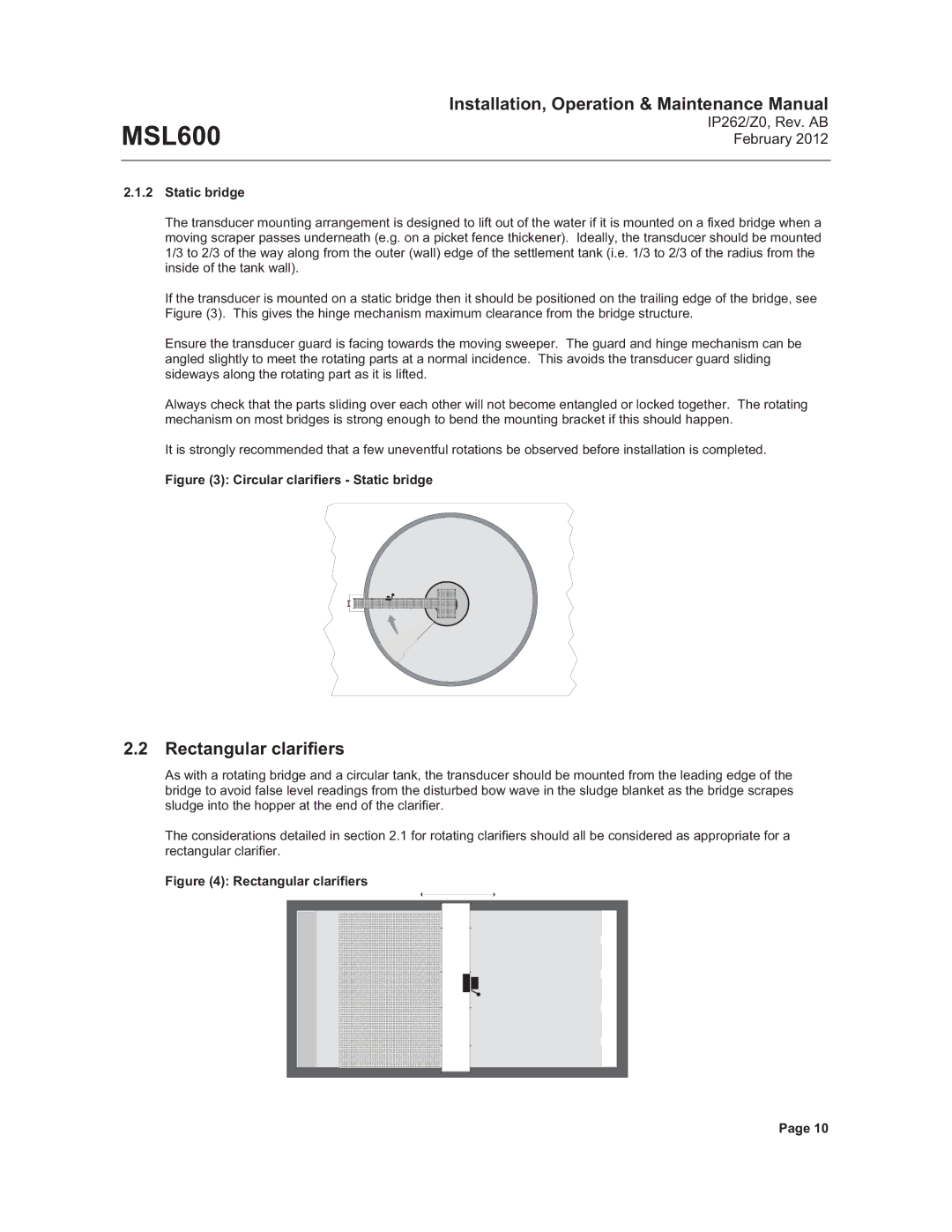
| Installation, Operation & Maintenance Manual |
MSL600 | IP262/Z0, Rev. AB |
February 2012 | |
|
|
2.1.2Static bridge
The transducer mounting arrangement is designed to lift out of the water if it is mounted on a fixed bridge when a moving scraper passes underneath (e.g. on a picket fence thickener). Ideally, the transducer should be mounted 1/3 to 2/3 of the way along from the outer (wall) edge of the settlement tank (i.e. 1/3 to 2/3 of the radius from the inside of the tank wall).
If the transducer is mounted on a static bridge then it should be positioned on the trailing edge of the bridge, see Figure (3). This gives the hinge mechanism maximum clearance from the bridge structure.
Ensure the transducer guard is facing towards the moving sweeper. The guard and hinge mechanism can be angled slightly to meet the rotating parts at a normal incidence. This avoids the transducer guard sliding sideways along the rotating part as it is lifted.
Always check that the parts sliding over each other will not become entangled or locked together. The rotating mechanism on most bridges is strong enough to bend the mounting bracket if this should happen.
It is strongly recommended that a few uneventful rotations be observed before installation is completed.
Figure (3): Circular clarifiers - Static bridge
2.2 Rectangular clarifiers
As with a rotating bridge and a circular tank, the transducer should be mounted from the leading edge of the bridge to avoid false level readings from the disturbed bow wave in the sludge blanket as the bridge scrapes sludge into the hopper at the end of the clarifier.
The considerations detailed in section 2.1 for rotating clarifiers should all be considered as appropriate for a rectangular clarifier.
Figure (4): Rectangular clarifiers
Page 10
